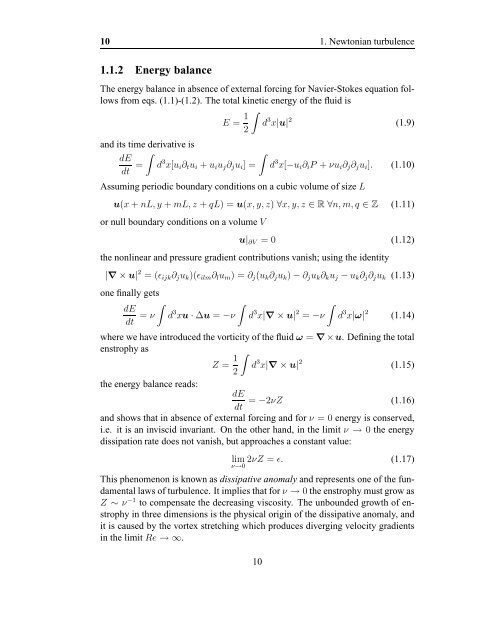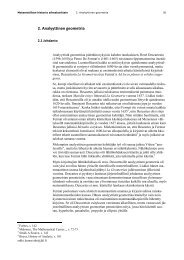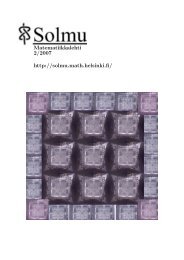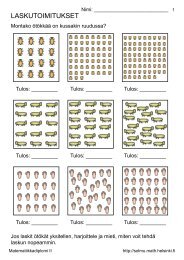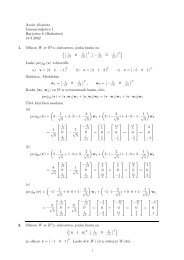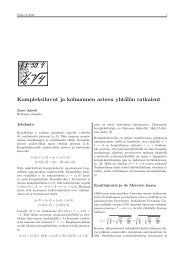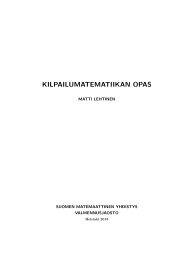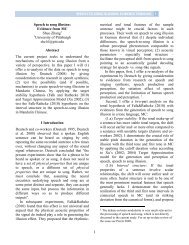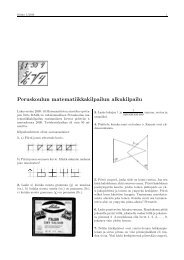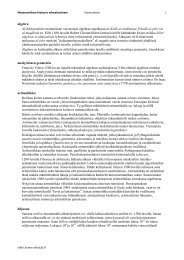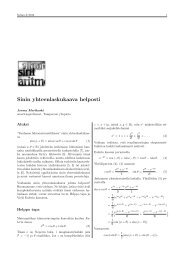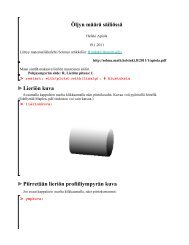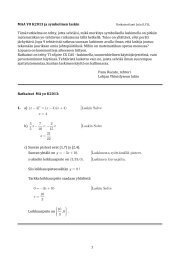Non-Newtonian turbulence: viscoelastic fluids and binary mixtures.
Non-Newtonian turbulence: viscoelastic fluids and binary mixtures.
Non-Newtonian turbulence: viscoelastic fluids and binary mixtures.
You also want an ePaper? Increase the reach of your titles
YUMPU automatically turns print PDFs into web optimized ePapers that Google loves.
10 1. <strong>Newtonian</strong> <strong>turbulence</strong><br />
1.1.2 Energy balance<br />
The energy balance in absence of external forcing for Navier-Stokes equation follows<br />
from eqs. (1.1)-(1.2). The total kinetic energy of the fluid is<br />
E = 1<br />
�<br />
d<br />
2<br />
3 x|u| 2<br />
(1.9)<br />
<strong>and</strong> its time derivative is<br />
dE<br />
dt =<br />
�<br />
d 3 �<br />
x[ui∂tui + uiuj∂jui] =<br />
d 3 x[−ui∂iP + νui∂j∂jui]. (1.10)<br />
Assuming periodic boundary conditions on a cubic volume of size L<br />
u(x + nL, y + mL, z + qL) = u(x, y, z) ∀x, y, z ∈ R ∀n, m, q ∈ Z (1.11)<br />
or null boundary conditions on a volume V<br />
u|∂V = 0 (1.12)<br />
the nonlinear <strong>and</strong> pressure gradient contributions vanish; using the identity<br />
|∇ × u| 2 = (ɛijk∂juk)(ɛilm∂lum) = ∂j(uk∂juk) − ∂juk∂kuj − uk∂j∂juk (1.13)<br />
one finally gets<br />
�<br />
dE<br />
= ν<br />
dt<br />
d 3 �<br />
xu · ∆u = −ν<br />
d 3 x|∇ × u| 2 = −ν<br />
�<br />
d 3 x|ω| 2<br />
(1.14)<br />
where we have introduced the vorticity of the fluid ω = ∇ ×u. Defining the total<br />
enstrophy as<br />
Z = 1<br />
�<br />
d<br />
2<br />
3 x|∇ × u| 2<br />
(1.15)<br />
the energy balance reads:<br />
dE<br />
= −2νZ<br />
dt<br />
(1.16)<br />
<strong>and</strong> shows that in absence of external forcing <strong>and</strong> for ν = 0 energy is conserved,<br />
i.e. it is an inviscid invariant. On the other h<strong>and</strong>, in the limit ν → 0 the energy<br />
dissipation rate does not vanish, but approaches a constant value:<br />
lim 2νZ = ɛ. (1.17)<br />
ν→0<br />
This phenomenon is known as dissipative anomaly <strong>and</strong> represents one of the fundamental<br />
laws of <strong>turbulence</strong>. It implies that for ν → 0 the enstrophy must grow as<br />
Z ∼ ν −1 to compensate the decreasing viscosity. The unbounded growth of enstrophy<br />
in three dimensions is the physical origin of the dissipative anomaly, <strong>and</strong><br />
it is caused by the vortex stretching which produces diverging velocity gradients<br />
in the limit Re → ∞.<br />
10


